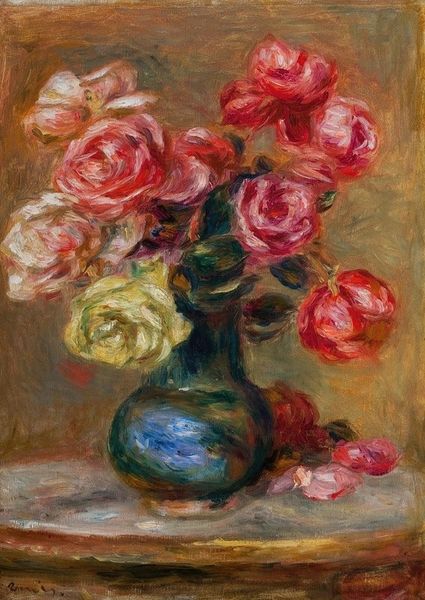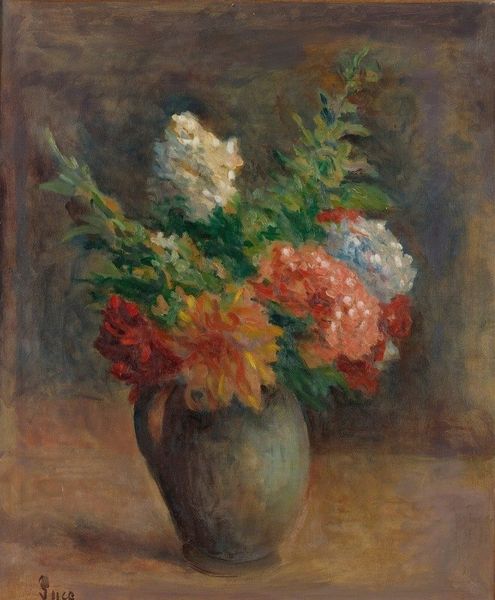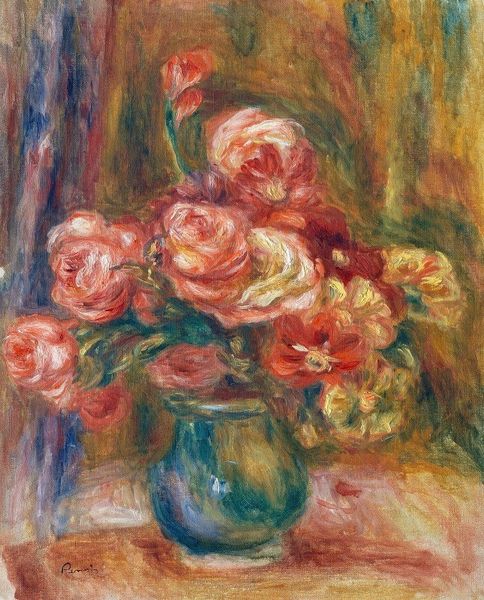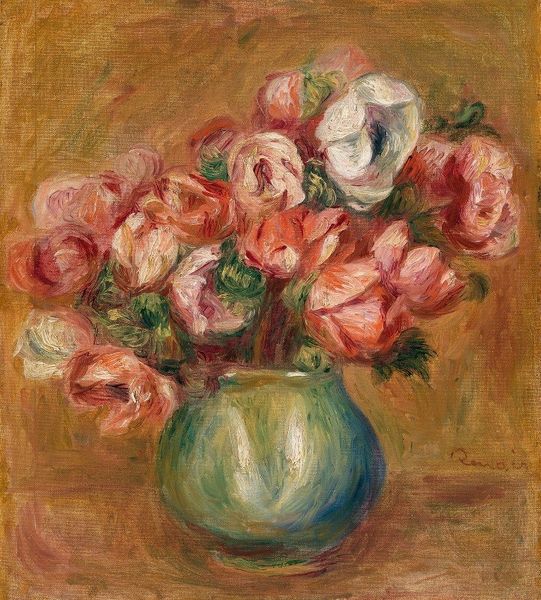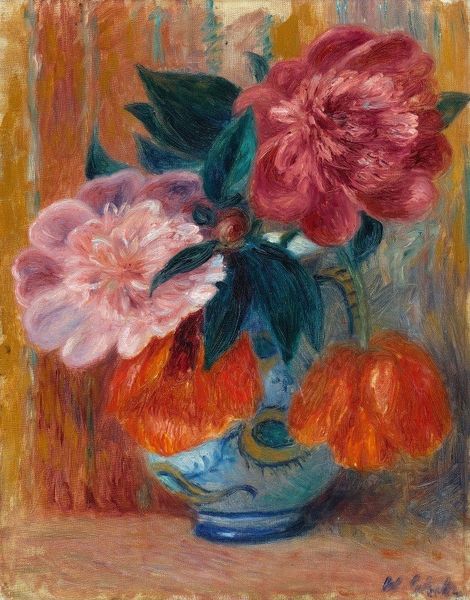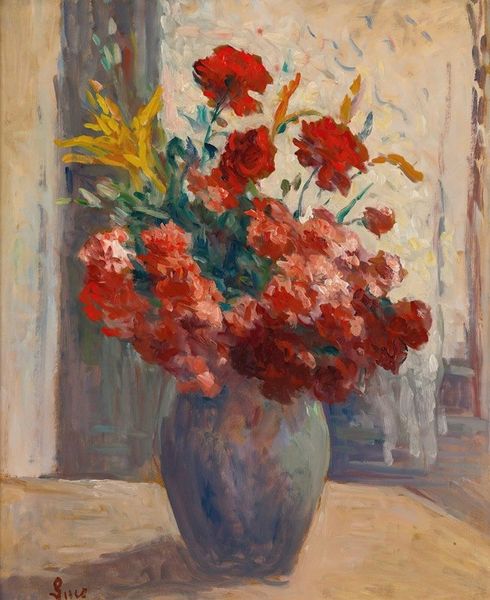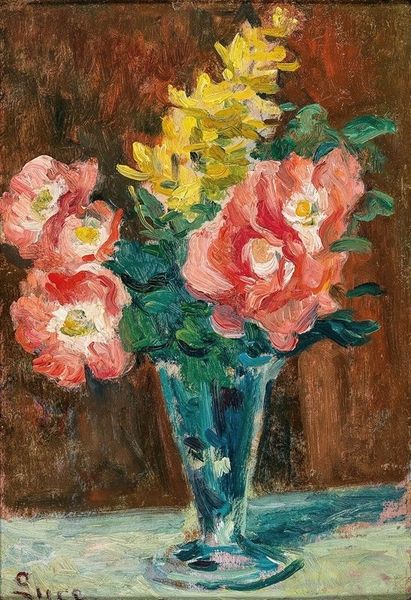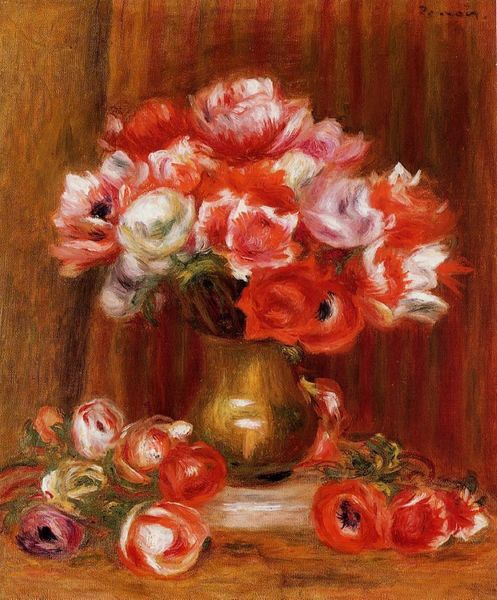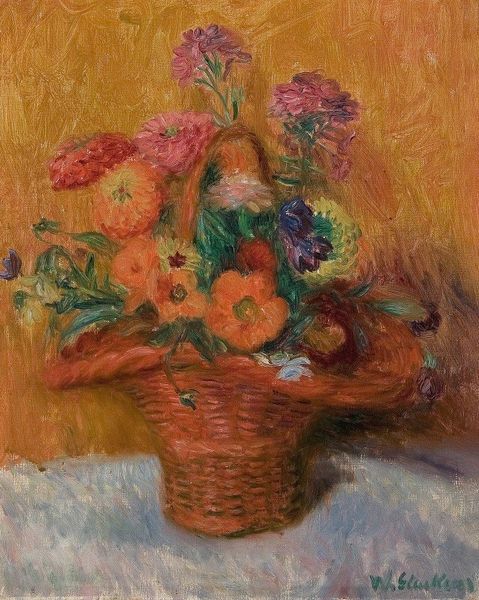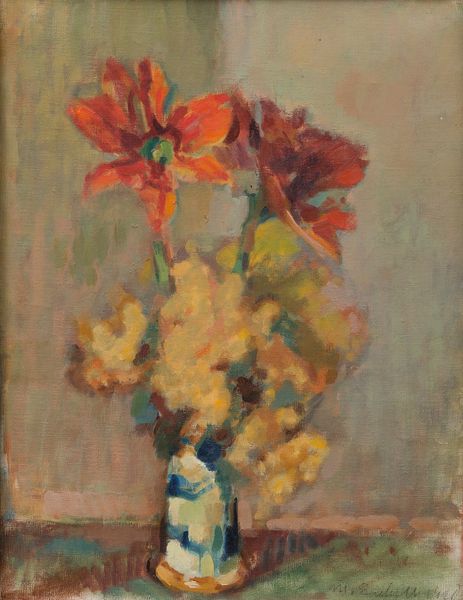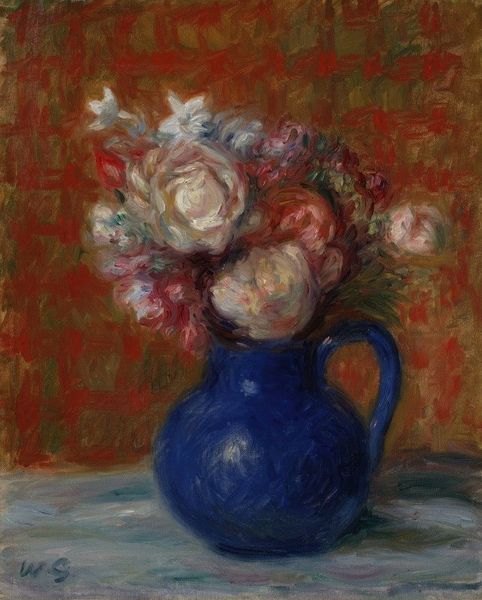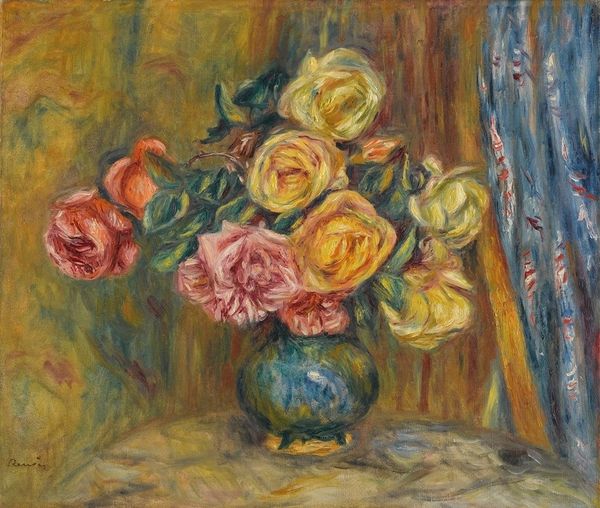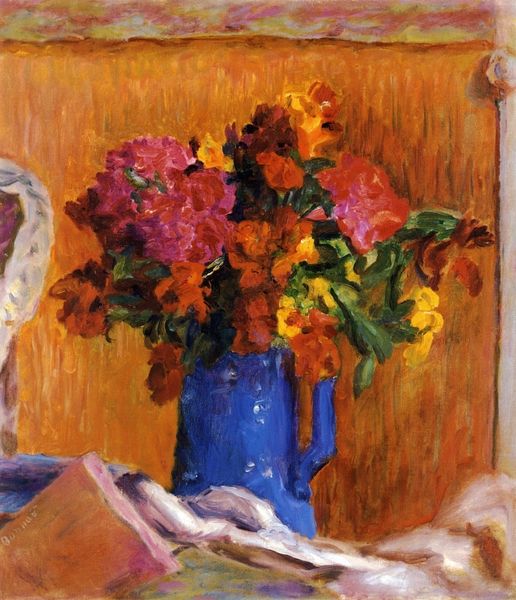
painting, oil-paint
#
painting
#
impressionism
#
oil-paint
#
oil painting
#
intimism
#
watercolor
Copyright: Public Domain: Artvee
Curator: The work before us is "Gladiolas in Green Glass Vase," by William James Glackens. Executed in oil, this piece exemplifies a beautiful exercise in Intimism and Impressionist aesthetics. Editor: Immediately, the intensity of those flowers against the subdued background grabs you, doesn't it? There’s almost a silent scream of color pushing through the quiet domestic scene. The blurry background does wonders making them stand out. Curator: It’s a wonderful contrast. Glackens, often associated with the Ashcan School, took a decidedly different approach here. Rather than depicting urban grit, he embraced a more intimate, domestic subject, reflecting a broader trend among some artists of his time to explore personal and interior spaces. The painting's subject gives that comfortable homely atmosphere of warmth and closeness. Editor: I'm curious about that contrast. Glackens was a social realist, right? To see him paint something so seemingly apolitical, do you think it was a deliberate shift away from commentary, or perhaps a quieter reflection on beauty amidst urban struggle? Almost like a controlled refusal to show what it’s there to show? Curator: A fascinating point. Considering Glackens’ social consciousness, I believe we can view this as a kind of reprieve, a moment of respite from the harsh realities of urban life that he so often portrayed. Even the vase, which appears to be glass or ceramic with blue hue, adds a subtle vibrancy, harmonizing yet contrasting with the flowers' fiery tones. And note how he captures light! Editor: Absolutely. The way light dances across the petals and the subtle shifts in color – it speaks to the transient nature of beauty and domestic tranquility, doesn't it? It makes me consider, too, the role of women in these domestic settings. Were these quiet moments of beauty accessible to all women, or were they another marker of class privilege? Is it perhaps just the privilege of having a house at all? Curator: I think you are right, it makes one wonder. Glackens avoids heavy moral judgments on social privilege or their art representations, it just seems he is trying to freeze that moment of brief and delicate intimacy within familiar home settings, don’t you agree? Editor: Yes, although these glimpses into interiors can’t be detached from power structures and privilege. Anyway, despite our concerns about class dynamics, there is some intense expressive ability that makes this work captivating! Curator: Indeed. I will carry those new exciting reflections to the next analysis! Editor: And I, on how can beauty be inherently subversive!
Comments
No comments
Be the first to comment and join the conversation on the ultimate creative platform.
